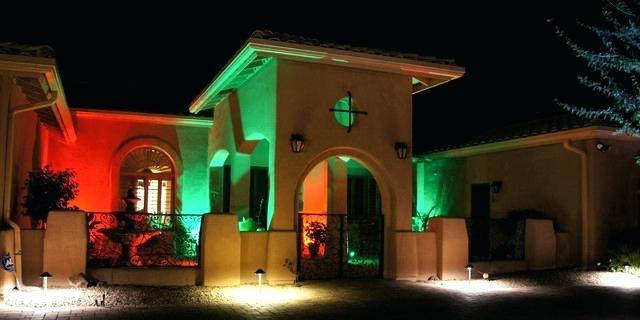The Original Manufacturer Of LED lighting
 RioTinto
RioTinto  2025-11-24
2025-11-24
When it comes to choosing LED lights, few aspects are as important as the color of the light. With a wide array of options available, it is essential to comprehend how light is perceived. Prior to exploring the range of light color selections, it is crucial to understand the mechanics of vision. This fundamental understanding lays the groundwork for recognizing the importance and uniqueness of various light colors. Depending on the specific application, some color temperatures may be more suitable than others.
How is Light Perceived?
Colors represent various wavelengths of light, as illustrated in the wavelength diagram below. They constitute merely the visible spectrum of a wavelength chart, measured in NanoMeters (nm). Light, as it is perceived, consists of a spectrum of electromagnetic radiation with varying wavelengths. "When the complete spectrum of visible light passes through a prism, the wavelengths disperse into the colors of the rainbow, as each color corresponds to a distinct wavelength. Violet possesses the shortest wavelength, approximately 380 nanometers, while red has the longest wavelength, around 700 nanometers" (Science Mission Directorate, 2016).

How is White Light Assessed?
If the entire spectrum of light is perceptible, it appears as white light. White light can be understood or identified by contrasting it with the light emitted from various temperatures of molten iron. This benchmark provides a temperature that can be utilized to denote a particular kind of illumination. For instance, warm white is analogous to molten iron at 3000K (Kelvin, a precise measurement of temperature)!
Soft white (2700K) creates a candlelit atmosphere that is frequently utilized to foster a homely and tranquil environment. This particular color temperature is predominantly found in bedrooms.
Warm white (3000K) emits a warm, yellowish glow that is typically employed to establish a cozy and welcoming space. It is the most favored color temperature and is widely used in residential settings.
Cool/Neutral White (4000K-4300K) generates a neutral light that is commonly applied in commercial environments or workspaces where bright and clear illumination is essential.
Day White (6000K+) closely resembles the light emitted by the sun at midday and is often used for outdoor lighting or in areas where accurate color representation is crucial.
How is Light Accuracy Assessed?
The Color Rendering Index (CRI) serves as a metric for evaluating the accuracy of white light. The sun is considered the benchmark, receiving a score of 100 on the CRI scale. Standard LEDs usually score around 80 on this scale, which ranges from 0 to 100. An LED with a CRI of 90 or higher is indicative of superior light rendering quality.

CCT: Correlated Color Temperature (also referred to as "adjustable white"). This technology utilizes two adjacent LED chips; one operates at a lower Kelvin temperature while the other functions at a higher temperature. These two chips can be blended through controls, providing excellent flexibility in color temperature.
RGB: Red, Green, and Blue. This technology consists of a single LED chip that contains sections for red, green, and blue. These colors can be mixed using a controller to create a full spectrum of colors, making it an excellent choice for entertaining and distinctive lighting effects.
RGBW: Red, Green, Blue, and White. This technology merges the best features of both worlds. It includes LED chips with red, green, and blue sections, along with a dedicated white chip to ensure full spectrum accuracy. These can be blended or selected individually through a controller.

CRI: Color Rendering Index. This metric evaluates the accuracy of white light on a scale ranging from 0 to 100. While the average LED lights generally score around 80 on the CRI scale, those achieving a CRI of 90 or above demonstrate outstanding light accuracy.
Conclusion
Grasping the intricacies of light color is crucial in the context of LED lighting selection. Light perception encompasses a range of electromagnetic radiation with differing wavelengths, each playing a role in the diverse array of colors observed in the environment. The combination of these wavelengths not only shapes the atmosphere created but also affects the practical uses of LED lights. Ranging from warm, welcoming hues to sharp, neutral shades, the selection of light color can profoundly influence the ambiance and functionality of a space. Additionally, factors such as color rendering accuracy, evaluated by the Color Rendering Index (CRI), further highlight the significance of choosing the appropriate lighting solution.
Rio Tinto high quality LED UV blacklight, RGBW wall washer, flood light, highbay light and other lighting solutions will enrich your life and buildings.
 SZRIOTINTO-LIGHTING COMPANY
SZRIOTINTO-LIGHTING COMPANY
Welcome to SZriotinto , your source for all illumination solutions.
We're dedicated to giving you the very best of outdoor lighting experience, with a focus on illumination design, lighting planing and executing of the lighting projects.